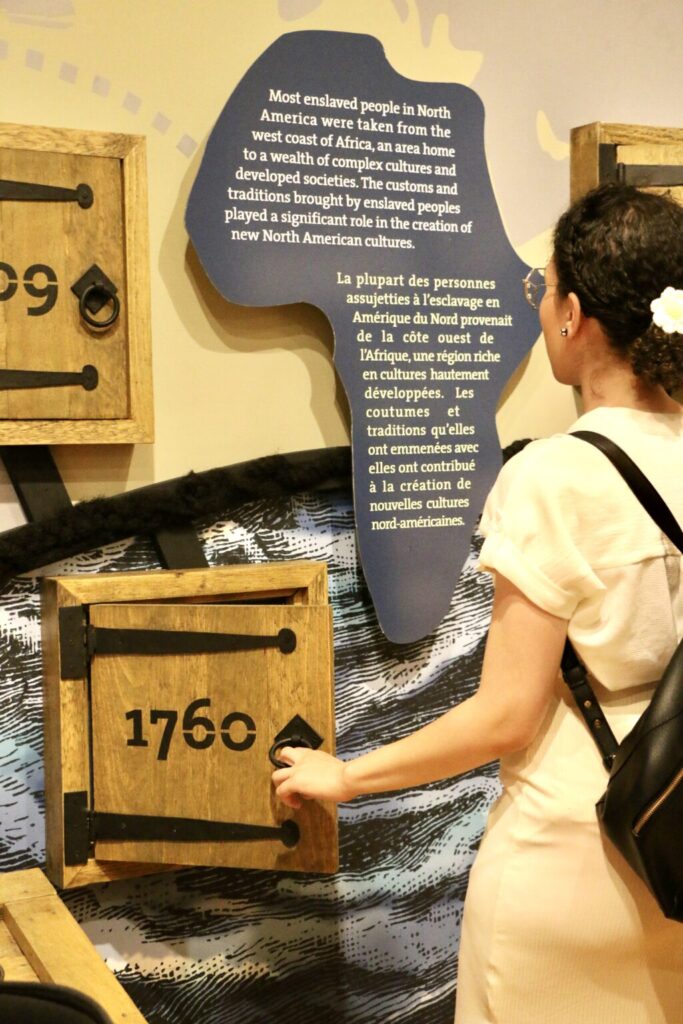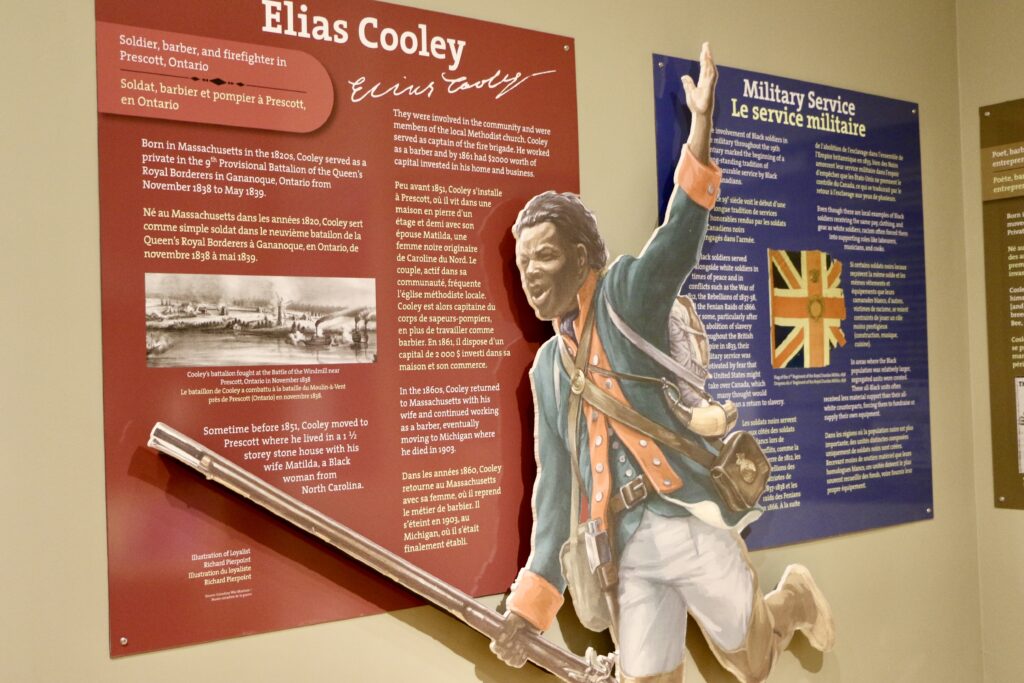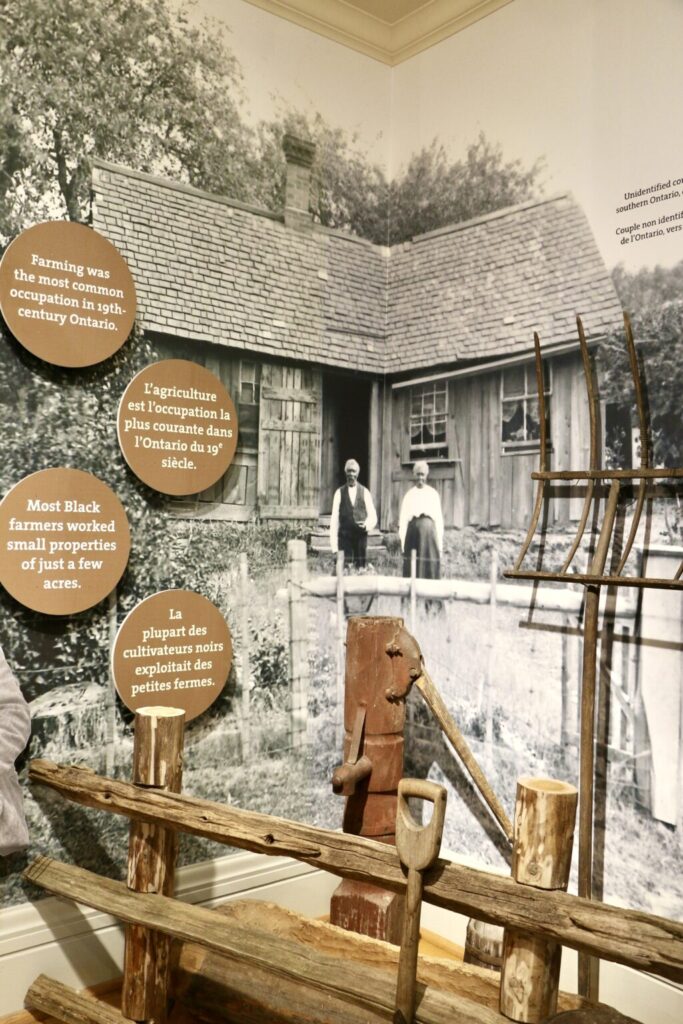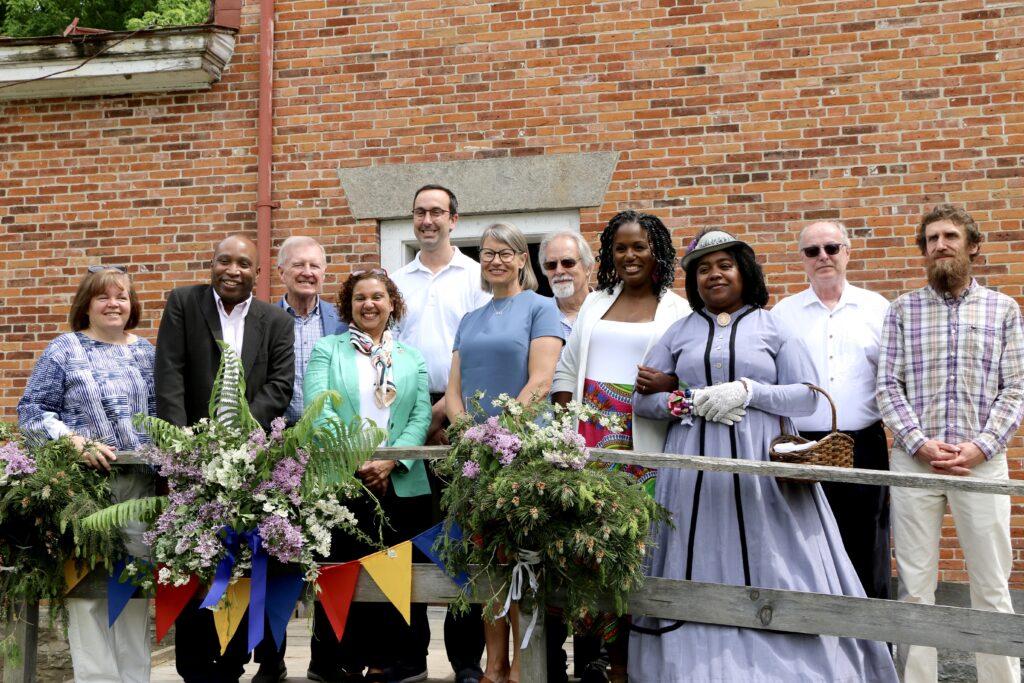Upper Canada Village Unveils New Permanent Black History Exhibit
Morrisburg, ON – Saturday, May 25, 2024, Upper Canada Village officially opened and celebrated a new permanent exhibit that focuses on local Black history of what was then Upper Canada in the 1860s.
Pictured above at the opening are: L to R – Tracey Ogilby – Manager, Upper Canada Village. Councillor Rawlson King – City of Ottawa Councillor for Ward 13 Rideau-Rockcliffe and Ottawa’s first Black City Councillor. Honourable Bob Runciman – Chair, St. Lawrence Parks Commission. Senator/Sénatrice Bernadette Clement – Canadian Senator, Former Mayor of Cornwall, First Black woman to serve as a mayor in Ontario. Member of Provincial Parliament Nolan Quinn – Member of Provincial Parliament for Stormont, Dundas, South Glengarry. Hollee Kew – GM & CEO, St. Lawrence Parks Commission. Guy Tondreau, Commissioner, St. Lawrence Parks Commission. Keisha Cuffie – Black History Program Development & Historical Interpreter, Upper Canada Village. Helen Muleme – Cultural Advisor for the Black History Programming & Exhibit, Upper Canada Village. Ian Roberts, Commissioner, St. Lawrence Parks Commission. Julian Whittam – Coordinator of Interpretation for Upper Canada Village.
The exhibit shares the context of the area’s Black population and tells the personal stories of some of the prominent Black figures who helped shape the Upper Canada region. It is a celebration of Black History, Black Heritage, and Black Achievement. Admission to the Black History Exhibit is included in Upper Canada Village’s general admission daily programming ticket.
The new Black history programming was developed through extensive research and with input from a Black history program development coordinator at the Village, and through community consultation with local Black communities. Consultation involved reaching out directly to guests who previously submitted feedback about the underrepresentation of black history at the Village. Many of them became community advisors, helping to shape the exhibit and share the stories with authenticity, sensitivity and pride.



The exhibit aims to tell diverse stories of local Black Canadians throughout Upper Canada’s history, using artefacts, archival documents, individual and family stories, excerpts from oral histories, newspaper accounts and photographs to illustrate their contributions. The exhibit features select objects to elevate stories that speak to Black liberation and social equality, such as a period barber chair, representing entrepreneurial success and community contribution.
Black history is an essential component of Canadian heritage, and this exhibit serves as a foundational building block for broader, long-term conversations about the rich tapestry of Black history, an integral part of Canadian history.
Opening this exhibit marks a milestone along an important journey, where small steps can lead to significant change in how history is understood and celebrated.
About Upper Canada Village
Depicting life in a rural English Canadian setting during the year 1866, Upper Canada Village is one of the largest living-history museums in Canada. It was founded in 1961 and features more than 40 historic buildings, many of which were moved to the Village from the “Lost Villages” to preserve them prior to the flooding for the St. Lawrence Seaway development project. Talented historical interpreters bring these buildings to life every day, recreating traditional trades, farming, music and 19th century social life – creating an immersive guest experience that makes every visit to the Village different from the last.





